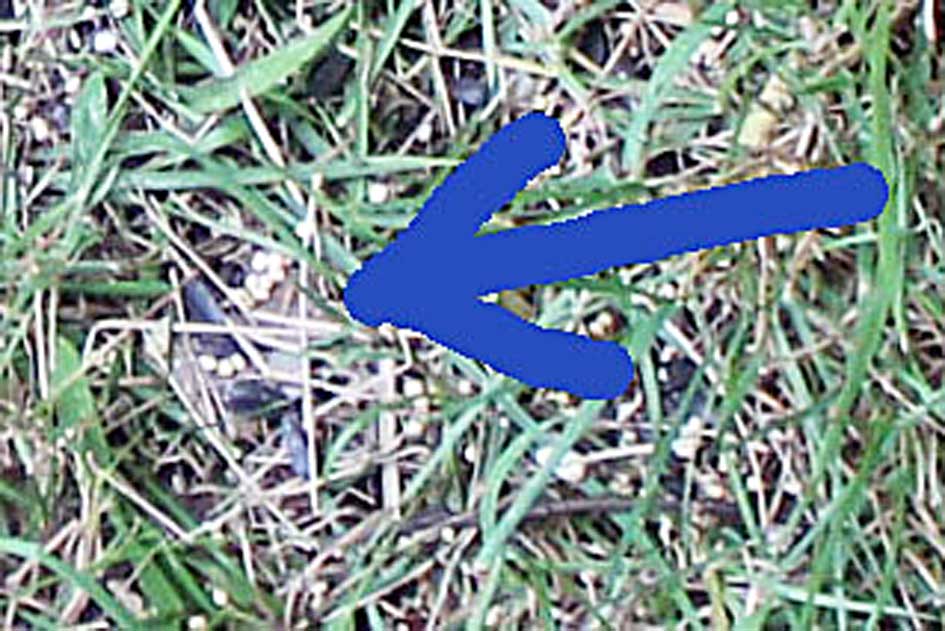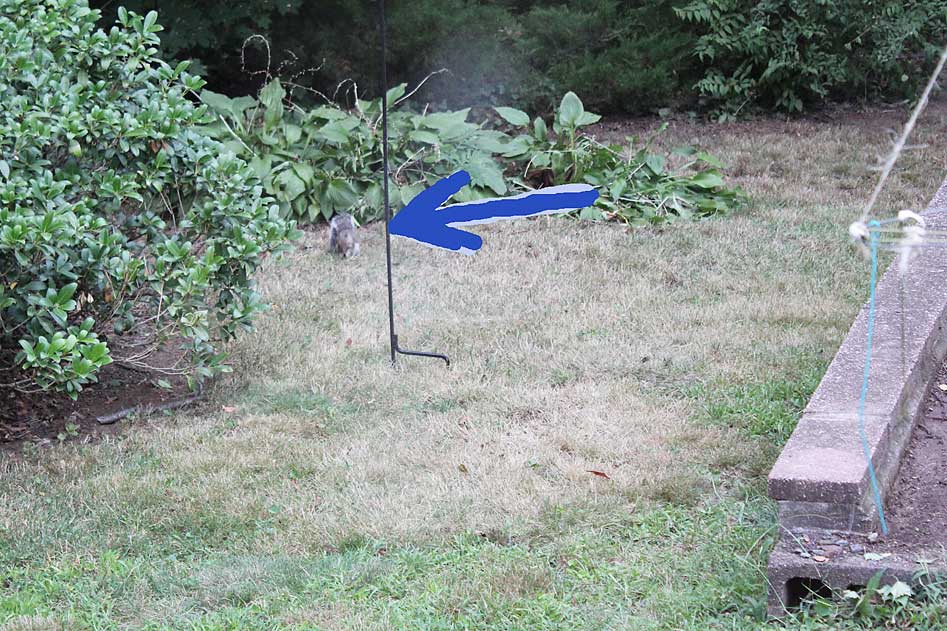
Birds in New Jersey 2014
Friday, 22 August 2014. Our birdfeeders explained
The area where the trouble-makers are fed: the house sparrows. Only one feeder is put up for them. Often even that feeder
is not put up. The seed for them is the cheapest available, a mix from Costco ($16 for 40 lbs). Most of it is sprinkled on the ground.
This keeps the house sparrows, squirrels, mourning doves, rock doves, and the odd redwinged blackbird, grackle, and brown-headed
cowbird busy for hours, looking for the seeds in the grass.

Seeds on the ground

Seeds on the ground, close-up: black oil sunflower and millet, for the most part.

The new way to feed birds: A series of feeders designed just for certain kinds of birds, all with anti-sparrow technology.
That is, a "halo" from a cheap $4 hula-hoop, from which fishing line is hung. The older halos show the evolution of the
hanging strands, from straightened coat hangers to piano wire to fishing line. Instead of a mix of cheap seeds, this feeder
only has black oil sunflower seeds, with a "topping" of some crushed nuts for the titmouse, who seems to like nuts.

The back yard today. This evening, while the house sparrows, mourning doves and rock doves ate at the back rear left, a black-capped
chickadee ate at the first halo feeder; a house finch ate at the second halo feeder; a goldfinch ate at the third halo feeder, and, for a
few seconds,
a hummingbird ate at the red hummingbird feeder.

The backyard layout, explained

Area 1: farther back, where seed is thrown on the ground, for the too-aggressive house sparrows and the ground feeders.
Feeder 2: Under a halo, this is where a suet feeder can be hung up, for woodpeckers.
Feeder 3: Under a sparrow-repelling halo, a mesh feeder with only sunflower seeds and a few nuts. House finches, the titmouse,
the chickadees, and (once) a woodpecker eat here.
Feeder 4: A "finch mix" combined with a fancier "no-waste mix". All the birds that visit Feeder 3 also visit Feeder 4.
Feeder 5: A special nyjer seed feeder with tiny openings; only one goldfinch eats here.
Feeder 6: Hummingbird feeder.
Area 7: Fresh water in a shallow dish and a large ceramic planter.
Area 8: The metal poles have a coating of Crisco mixed with dried hot chili peppers. This seems to be keeping the squirrels
from climbing the poles.
Halo 9: Not very beautiful to look at, a typical "halo" from which fishing line is hung. So far, it's keeping feeders 3, 4 and 5
reserved for birds other than house sparrows.
The other strategy to reduce squirrel and house sparrow problems is to only put out the feeders when someone can watch them.
They are not left out during the day while I am at work.
At night
they are all brought in, to prevent night eaters (raccoons) from exploring the feeders.

As the day draws to a close, only a lone squirrel can be seen.
